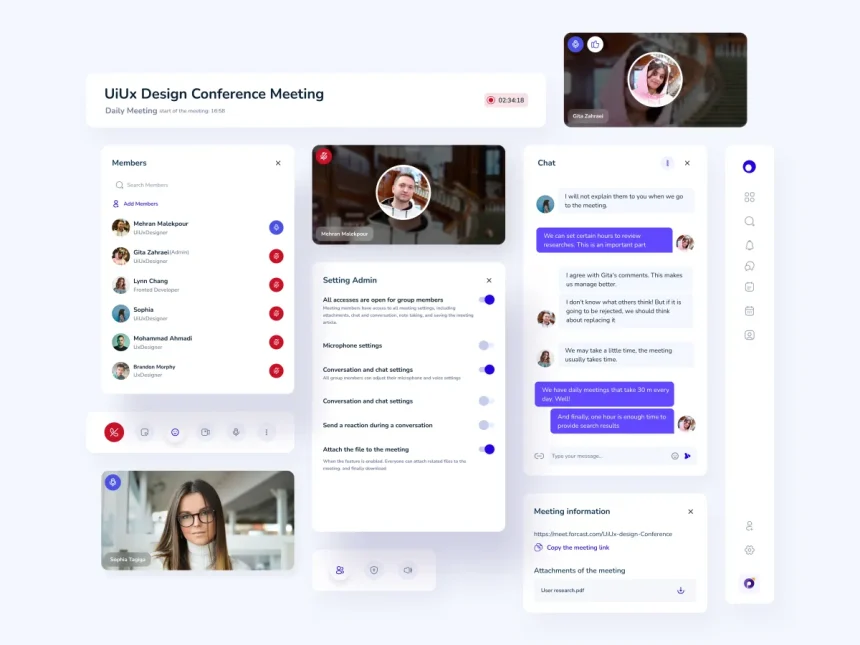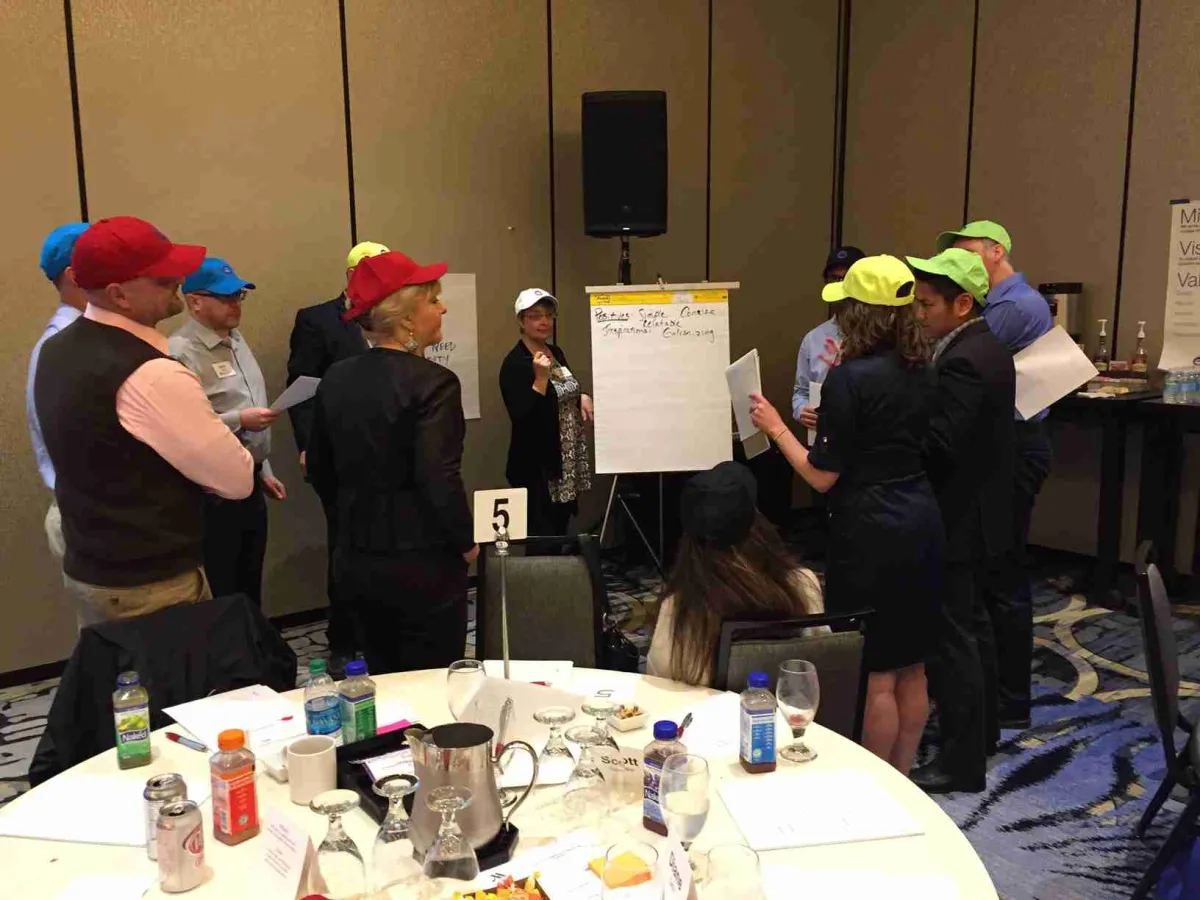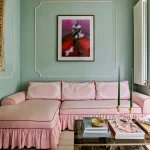Why Meeting Room Design Matters for Your Workplace
Meeting room design goes beyond just picking a table and chairs. It plays a big role in how your team collaborates, stays focused, and feels comfortable during meetings. A well-designed meeting space encourages better communication, boosts productivity, and supports different types of meetings—whether it’s a quick huddle, a video call, or a full team brainstorming session.
In today’s work environment, especially with hybrid meeting setups becoming the norm, your conference room layout needs to work for both in-person and remote participants. Good office space design in meeting rooms helps everyone stay connected and engaged, no matter where they are. Plus, when your meeting room feels inviting and professional, it reflects well on your company culture and brand.
Ultimately, investing in smart meeting room design means you’re investing in smoother meetings and happier teams, which translates to better outcomes for your business.
Key Elements of Effective Meeting Room Design
Creating a functional meeting room means focusing on several core elements that boost productivity and comfort.
Flexibility and Adaptability
Your meeting room should easily transform to fit different types of gatherings—whether it’s a quick team huddle, a hybrid meeting setup, or a full boardroom session. Modular meeting room furniture like movable tables and stackable chairs helps the space adapt quickly without hassle.
Comfort and Ergonomics
Comfort is crucial. Ergonomic office furniture that supports good posture can reduce fatigue and keep everyone focused longer. Adjustable chairs, sit-stand desks, and ample legroom go a long way in creating a welcoming environment.
Technology Integration
A modern meeting room is tech-ready. It should have easy-to-use video conferencing solutions, smart displays, and reliable Wi-Fi. These tools help remote and in-person teams collaborate smoothly without technical interruptions.
Acoustics and Lighting
Good office acoustics design reduces echo and background noise, making conversations clear. Combine this with adjustable lighting—like dimmable LEDs and natural light options—to create a space that feels open but also focused.
By prioritizing these elements, your meeting room becomes a place where ideas flow, technology supports, and people feel comfortable throughout the day. For ideas on versatile room design, check out related office space design inspirations.
Popular Meeting Room Layouts for 2025
Choosing the right conference room layout is crucial for effective office space design and workplace collaboration. Here are the top meeting room layouts making waves in 2025:
Boardroom Style
This classic setup features a large table with chairs around it, perfect for formal discussions and executive meetings. It promotes face-to-face interaction and works well for smaller groups who need direct communication.
U-Shape Style
Great for hybrid meeting setups, the U-shape layout allows everyone to see each other and the presentation area clearly. It supports group discussions and is ideal for training sessions or brainstorming workshops.
Classroom Style
Rows of tables and chairs facing the front work well for larger teams focused on presentations or training. This layout encourages note-taking and minimizes distractions—perfect for corporate interior design aimed at educational sessions.
Banquet Style
Round tables with seating encourage informal conversations and teamwork. This style is popular for workshops, team-building events, or any gathering where collaboration and interaction are priorities.
Selecting the right meeting room design layout sets the tone for productivity and helps ensure your team stays engaged and comfortable.
Aesthetic and Branding Considerations
When thinking about meeting room design, the look and feel matter just as much as function. Your meeting room is a reflection of your company’s identity and culture. A well-designed space with your brand colors, logo, and style can boost professionalism and make a strong impression on clients and employees alike.
Incorporate corporate interior design elements like wall art, custom furniture, or even branded wallpaper to reinforce your company’s personality. Keep the color palette consistent with your brand to create a cohesive atmosphere. This not only supports workplace collaboration by setting the right tone but also helps with employee engagement.
Remember, a clean and organized space with thoughtful decor can make meetings feel more inviting. Don’t overlook small details like plants or ambient lighting—they add warmth and enhance comfort without cluttering the room.
Balancing aesthetics with practical office space design ensures your meeting room supports both communication and your brand image.
Technology and Tools for Modern Meeting Rooms
Technology is at the heart of any effective meeting room design today. With hybrid meeting setups becoming the norm, having reliable meeting room technology is vital. Video conferencing solutions like Zoom, Microsoft Teams, or Google Meet are must-haves for connecting remote and in-office teams smoothly.
Here are some key tech tools and solutions to consider:
- High-quality video conferencing cameras and microphones: Clear visuals and audio help everyone stay engaged without interruptions.
- Large, easy-to-read displays or smart boards: These make sharing presentations or brainstorming ideas simple and interactive.
- Wireless screen sharing: This removes the hassle of cables, making it easy for everyone to contribute.
- Integrated room scheduling systems: Helps avoid double bookings and keeps meetings on track.
- Advanced office acoustics design: Proper soundproofing and noise reduction tools improve speech clarity.
- Smart lighting controls: Adjustable lighting that adapts to different meeting types can boost focus and reduce eye strain.
Investing in ergonomic office furniture that supports technology use, like desks with built-in charging ports, also enhances comfort and productivity. The right mix of tools not only supports better communication but promotes workplace collaboration, making every meeting more efficient and inclusive.
Practical Tips for Designing Your Meeting Room
Designing a meeting room that works for your team and visitors is all about balancing function and style. Here are some easy tips to get it right:
-
Plan for Flexibility
Use modular meeting room furniture that can be rearranged to fit different types of meetings, from quick huddles to larger workshops. This helps your space adapt to changing needs. -
Focus on Comfort
Invest in ergonomic office furniture like adjustable chairs and desks. Comfortable seating boosts focus and keeps everyone engaged during longer meetings. -
Optimize Acoustics and Lighting
Good office acoustics design reduces noise distractions, while adjustable lighting prevents glare and keeps the room bright but not harsh. -
Integrate the Right Technology
Set up reliable video conferencing solutions and meeting room technology that’s user-friendly. Make sure cables are managed neatly to avoid clutter. -
Keep Branding Subtle but Present
Reflect your company’s style with colors, artwork, or logos without overwhelming the space. This supports corporate interior design and creates a professional vibe. -
Consider Hybrid Meeting Needs
Plan for hybrid meeting setup by including cameras, microphones, and screens that connect in-person and remote attendees seamlessly. -
Maximize Space Efficiency
Use space-saving layouts like U-shape or boardroom style depending on how many people will use the room regularly. This keeps the area functional and comfortable.
With these tips, you’ll create a meeting room that supports teamwork, shows off your company’s identity, and keeps everyone focused and comfortable.
Aura’s Top Picks for Meeting Room Design Products
When it comes to meeting room design, having the right products can make all the difference. Here are some of Aura’s favorite picks that blend style, comfort, and function—perfect for U.S. workplaces looking to boost collaboration and productivity.
Ergonomic Office Chairs
Comfort is key during long meetings. Look for chairs with adjustable height, lumbar support, and breathable materials. Brands like Herman Miller and Steelcase offer durable options that keep your team comfortable and focused.
Modular Meeting Tables
Flexibility matters. Modular tables let you rearrange your meeting room easily for different conference room layouts—from boardroom style to U-shape style. They’re great for hybrid meeting setups where space needs to shift fast.
Smart Video Conferencing Solutions
For seamless remote meetings, invest in cameras and microphones that capture clear audio and video. Logitech Rally and Poly Studio are top picks, helping your hybrid teams stay connected without tech headaches.
Acoustic Panels and Soundproofing
Good office acoustics design reduces noise distractions. Installing acoustic wall panels or ceiling tiles can improve sound quality and privacy, essential for open office layouts.
Adjustable LED Lighting
Lighting affects mood and focus. Choose LED fixtures with dimmable settings and daylight color temperatures to create a comfortable atmosphere tailored to your meeting type.
Integrated Power and Charging Stations
Keep devices powered with built-in USB ports and power outlets at the table. This convenience supports tech-heavy meetings and reduces clutter from cords.
Stylish Storage Solutions
Clutter-free rooms help productivity. Stylish cabinets and shelves keep materials and tech accessories organized while blending with your corporate interior design.
By selecting these products, you can create a meeting room that’s not just functional but inviting and efficient—making every meeting a success for your team.










